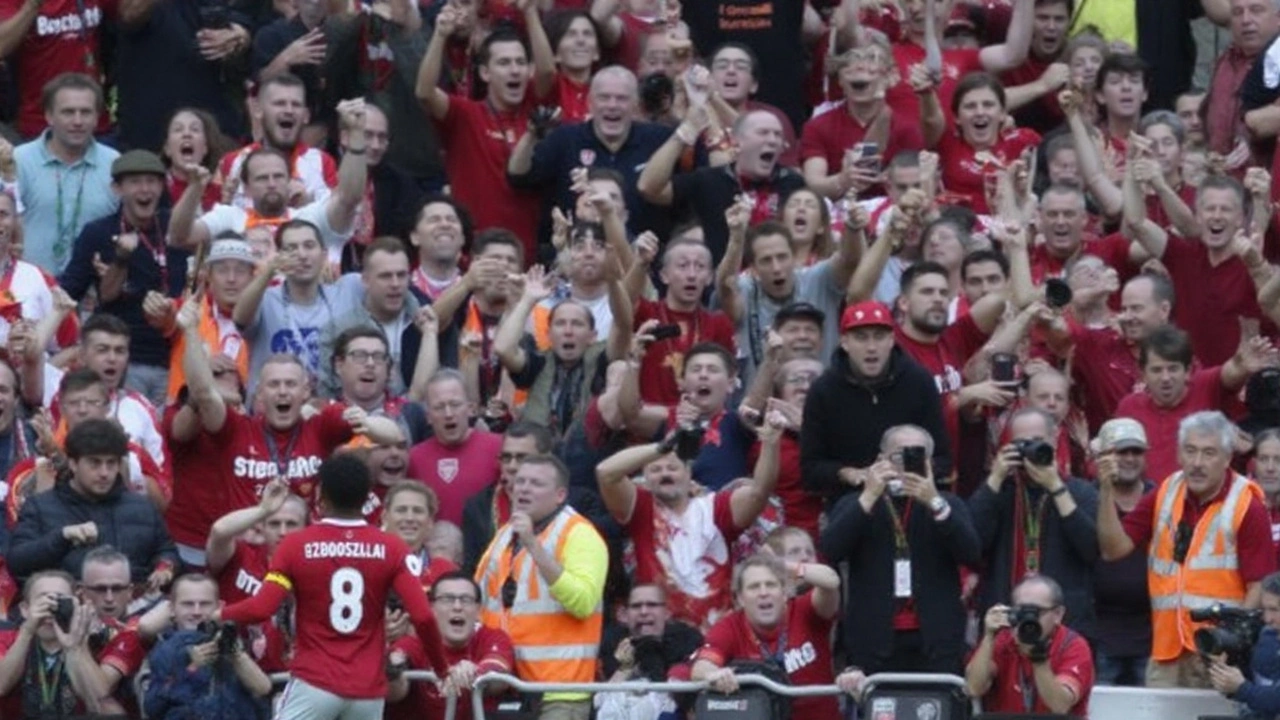Streameast shutdown: ACE and Egypt dismantle the world’s biggest illegal sports streaming network

The takedown that wiped out 1.6 billion visits
One of the internet’s biggest sources for free live sports streams is gone. The Alliance for Creativity and Entertainment (ACE) says it has permanently shut down Streameast, a network of more than 80 connected domains that racked up over 1.6 billion visits in the past year. The operation, carried out with Egyptian authorities and confirmed on September 3, 2025, is the most significant strike against live sports piracy in years.
Streameast had become the go-to destination for unauthorized broadcasts of Europe’s top soccer matches, including games from the English Premier League. It didn’t stop at soccer: the network also pushed viewers toward sport-specific piracy sites carrying NFL, NBA, MLB, and NHL games. ACE described it as the largest illegal live sports platform anywhere, and the traffic patterns back that up. Most visits came from the United States, Canada, Britain, the Philippines, and Germany—evidence that this wasn’t a niche operation tucked away on the edge of the web, but a global hub.
ACE’s chairman, Charles Rivkin, framed the move as more than a routine enforcement action. He called it a decisive win for rights holders and for fans who fund the system by paying for legitimate services. In a separate statement, DAZN’s chief operating officer, Ed McCarthy, applauded the dismantling and argued the site was draining value from sports at every level—from leagues to athletes to local production crews—while also exposing fans to scams and malware that often ride along on illicit streams.
If you type in a former Streameast address today, you’ll land on ACE’s “Watch Legally” page. That redirect is both a victory lap and a nudge, pointing viewers toward sanctioned options. It also signals a common tactic in modern antipiracy: don’t just kill a domain; turn it into a signpost for legal watching so audiences don’t drift to the next mirror without seeing an alternative.
ACE did not disclose detailed technical steps behind the operation or why Egyptian cooperation was key, beyond confirming authorities there played a central role. Usually, these actions involve a mix of domain seizures, registrar and hosting cooperation, and infrastructure disruption. In some regions, rightsholders pair those efforts with fast-track site-blocking orders that force internet providers to cut access to the most popular piracy domains during live games. The net effect is disruption: make it harder for pirate operators to stay online at scale, and less convenient for casual viewers to find their way back.

Why fans used it, why leagues fought it, and what happens next
Sports piracy didn’t take off because fans woke up one day and decided to dodge the law. It grew because watching legally got complicated and expensive. Rights are split across services, prices keep climbing, and blackouts still pop up. A Premier League fan in the UK might need multiple subscriptions across a season. A US viewer chasing soccer, football, and basketball can be asked to juggle cable or satellite, plus several streaming apps, plus the odd pay-per-view. That fragmentation is the single biggest driver sending people to sites like Streameast.
For leagues and broadcasters, the cost is real. A widely cited analysis by Synamedia and Ampere suggested sports rights holders collectively lose roughly $28 billion a year to streaming piracy. Put simply, when a big illegal platform attracts hundreds of millions of visits, a slice of would-be revenue leaks out of the system. That hits not only billionaire owners; it squeezes mid-tier clubs, reduces the money flowing to women’s leagues, and makes it tougher for production crews and smaller regional broadcasters to invest.
There’s also risk on the viewer side that rarely gets the same airtime. Illicit sports sites are a soft target for malvertising, phishing overlays, fake “update your player” prompts, and sketchy browser extensions. Cybersecurity firms have documented crypto-mining scripts running in the background of free streaming pages and credential-stealing pop-ups disguised as login gates. Fans usually arrive for a free match; they can leave with a compromised device or a drained bank account.
That mix—revenue loss for sport and risk for fans—explains why groups like ACE have shifted more muscle toward live sports. It’s not just about movies and TV anymore. Live rights are the last big driver of appointment viewing. If pirates intercept that audience, the entire streaming business model wobbles.
Will this stick? Expect a familiar pattern. Major takedowns cause a sharp dip in supply, then smaller sites try to fill the gap. Some are quick clones; others move onto messaging apps, private Discord servers, or IPTV resellers. But scale is hard to rebuild. Streameast stitched together traffic, domains, and brand recognition over time. That network effect doesn’t reappear overnight, especially when domain registrars, hosting providers, ad networks, and payment processors are already on alert.
Enforcers are getting smarter on the technical front too. Dynamic blocking lets rightsholders push updated lists of pirate domains and IPs to internet providers during live events. Watermarking and fingerprinting tools help trace leaked feeds back to the source within minutes. When combined with faster legal pathways to shut down mirrors and seize domains, it shortens the window pirates have to build audiences around big fixtures.
That said, long-term progress depends on more than enforcement. The legal product has to be easier. Fans have been loud about what they want: simpler bundles, flexible monthly passes, single-game purchases for big matches, and fewer platform hops per weekend. Some leagues and streamers are experimenting—student discounts, club-specific passes, and late-night “lite” bundles for overseas fans. None of this is easy given contract structures, but every step that reduces friction chips away at the incentive to pirate.
For the average viewer who used Streameast, here’s what to expect now:
- Short-term disruption. Streams you relied on will be gone or unreliable as copycats scramble.
- More aggressive blocking around marquee games. If a mirror pops up, it may vanish mid-match.
- More prompts to legal options. Former Streameast domains now redirect to ACE’s information page, and you’ll see more messaging from leagues and broadcasters.
- Better deals in pockets. Watch for new bundles, game passes, or time-zone-friendly packages as services court price-sensitive fans.
For leagues and streamers, the timing matters. The European soccer calendar is in full swing, and American football is ramping up. Taking down a huge gateway in early September sends a message before peak viewing weekends. It also forces smaller pirate networks to carry surging demand—something many cannot do without tipping off hosts, payment processors, or law enforcement.
ACE’s move fits a broader trend. In the past, the group made headlines shuttering major illicit streaming portals and pressuring advertising middlemen who funded them. Those actions didn’t end piracy, but they made it harder for pirates to work at scale and profit openly. What’s different now is the focus on live sports and the speed required to hit moving targets while the games are actually on.
The Egypt angle matters even if details are scarce. Cross-border cases live and die on cooperation. When operators or infrastructure touch multiple jurisdictions, one country’s warrant can be another country’s dead end. Coordinated action—seizing domains, freezing accounts, or detaining suspects—can make the difference between a site losing a few domains and an operation actually going dark. In this case, ACE says Egyptian authorities were central to that outcome.
The market will test how durable this win is within weeks. If history is a guide, some fans will wait for replacements; others will drift to legal options if the path is cheaper and simpler than it used to be. Rights holders, for their part, will keep tightening the net—aiming at the plumbing that keeps piracy afloat: content delivery nodes, hosting hubs, mirror farms, ad-tech brokers, and the reseller networks pushing subscription codes for IPTV apps.
The biggest unknown is whether the industry can make meaningful changes that reduce the urge to look elsewhere. The formula is straightforward, even if the negotiations behind it aren’t: fewer services to follow one team, clearer schedules in one place, predictable pricing, and easy one-off purchases for big nights. When the legal option is simple and fair, piracy loses its best pitch.
For now, the Streameast shutdown closes a giant door in the shadow market. It’s a win for ACE, for the Egyptian authorities who helped pull it off, and for the leagues and broadcasters who have argued for years that live sports can’t keep bleeding viewers to free streams. Fans will vote with their clicks in the coming weeks. How the industry responds will decide where those clicks land.
